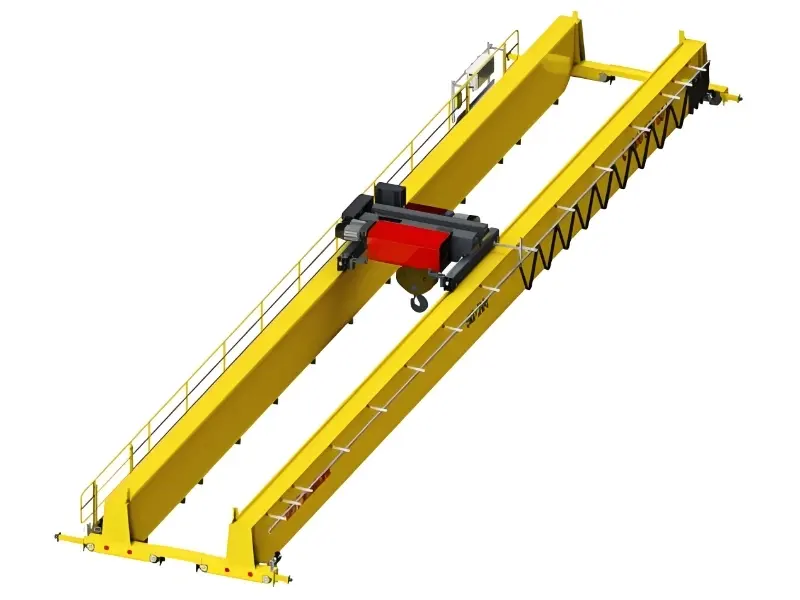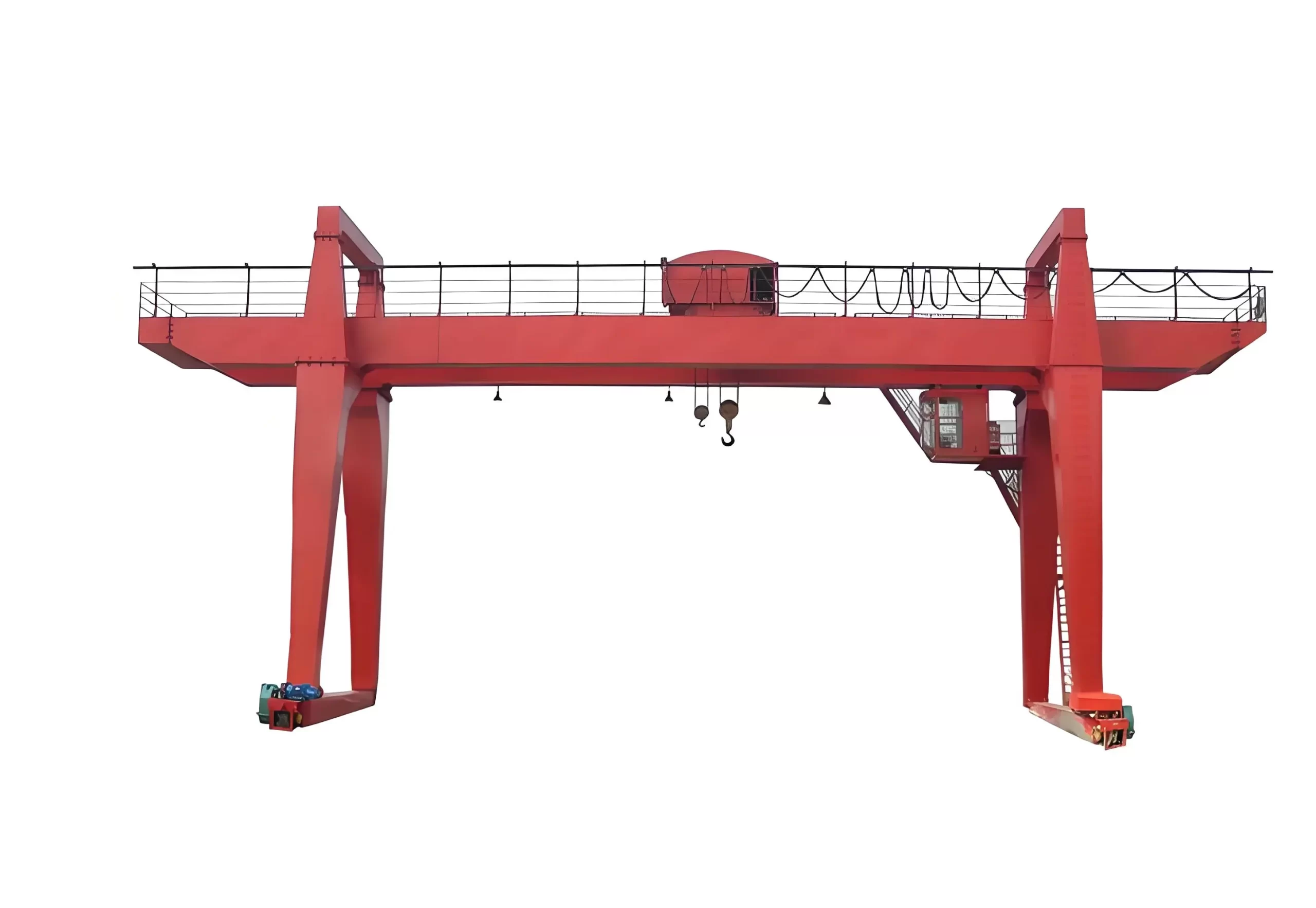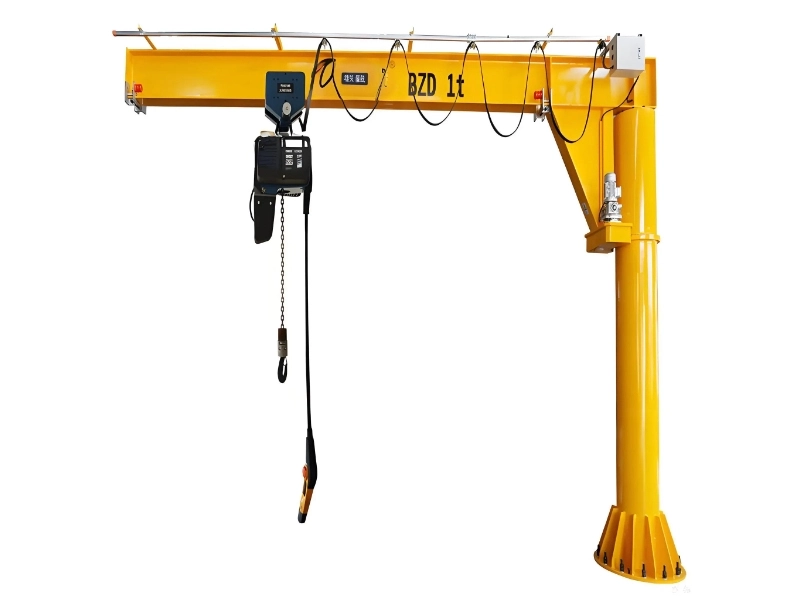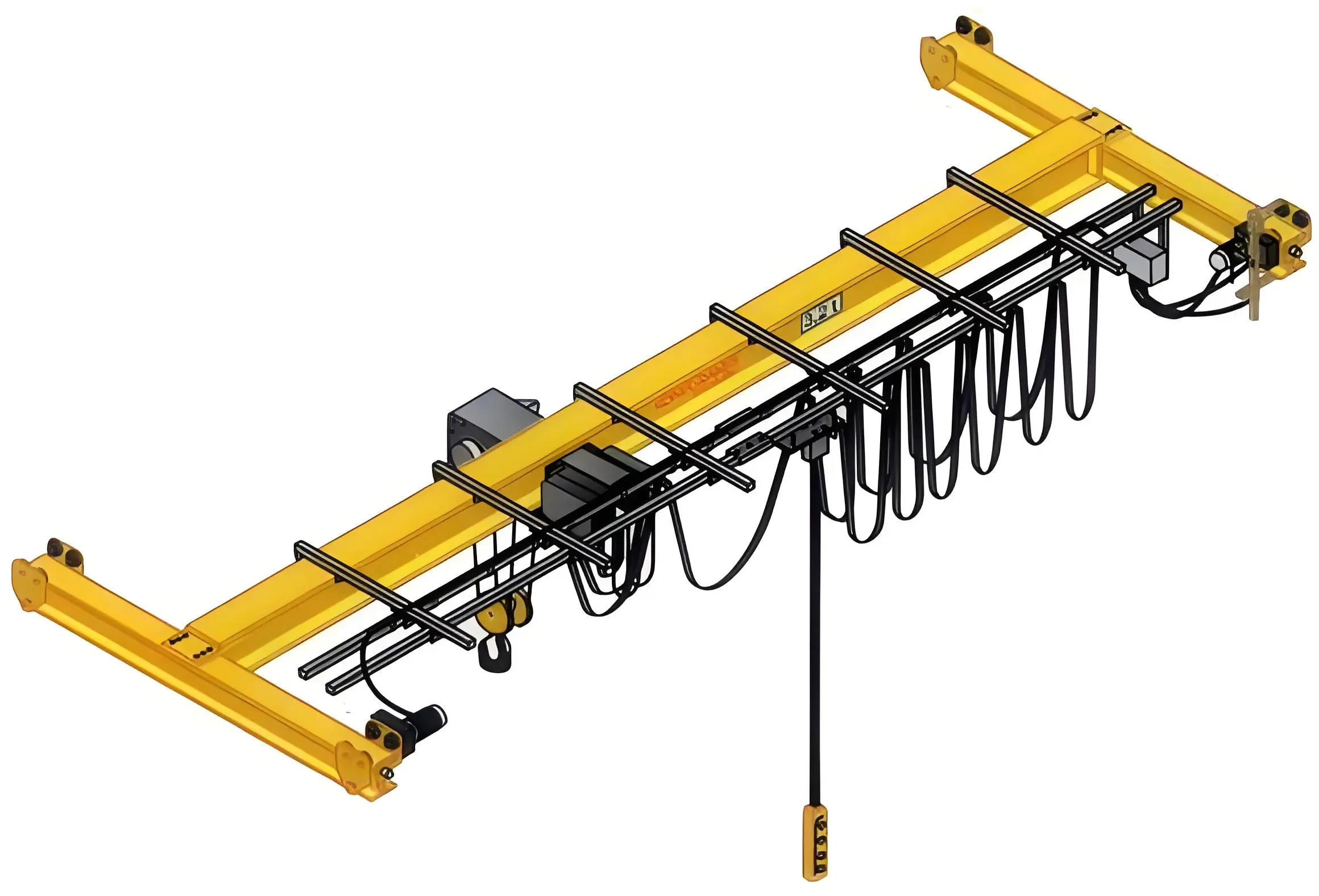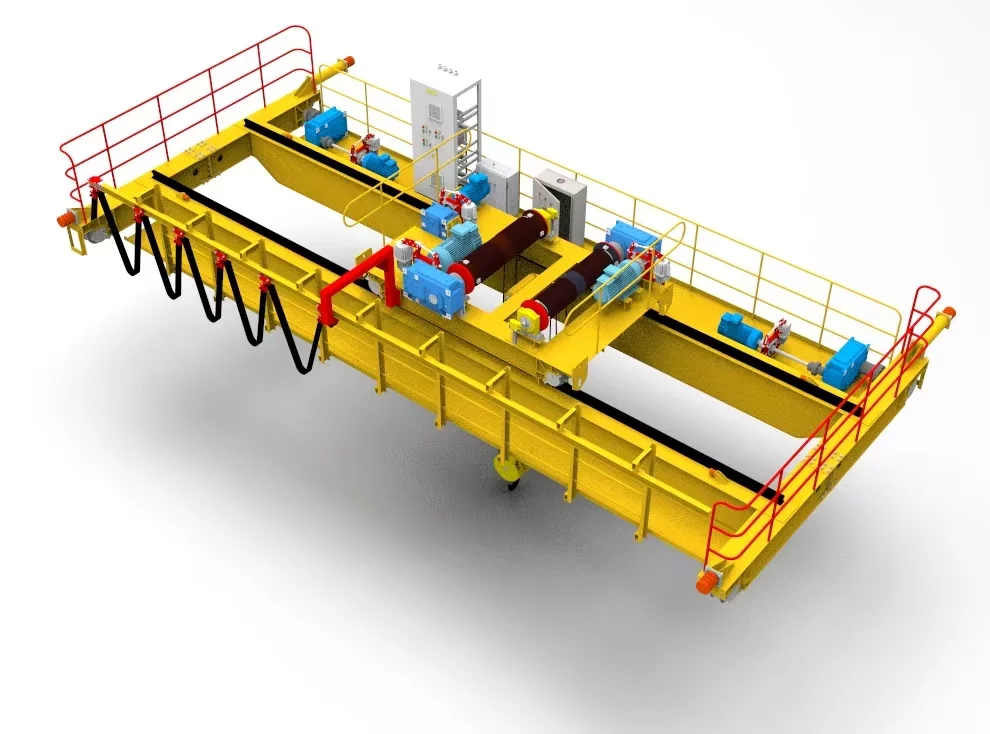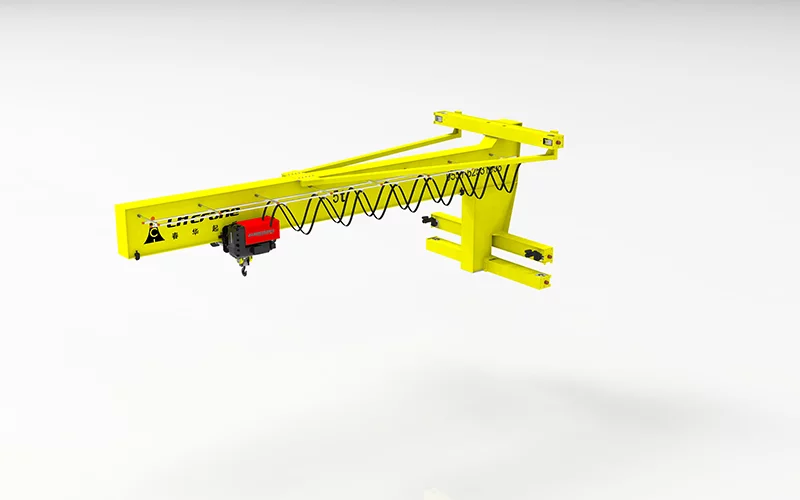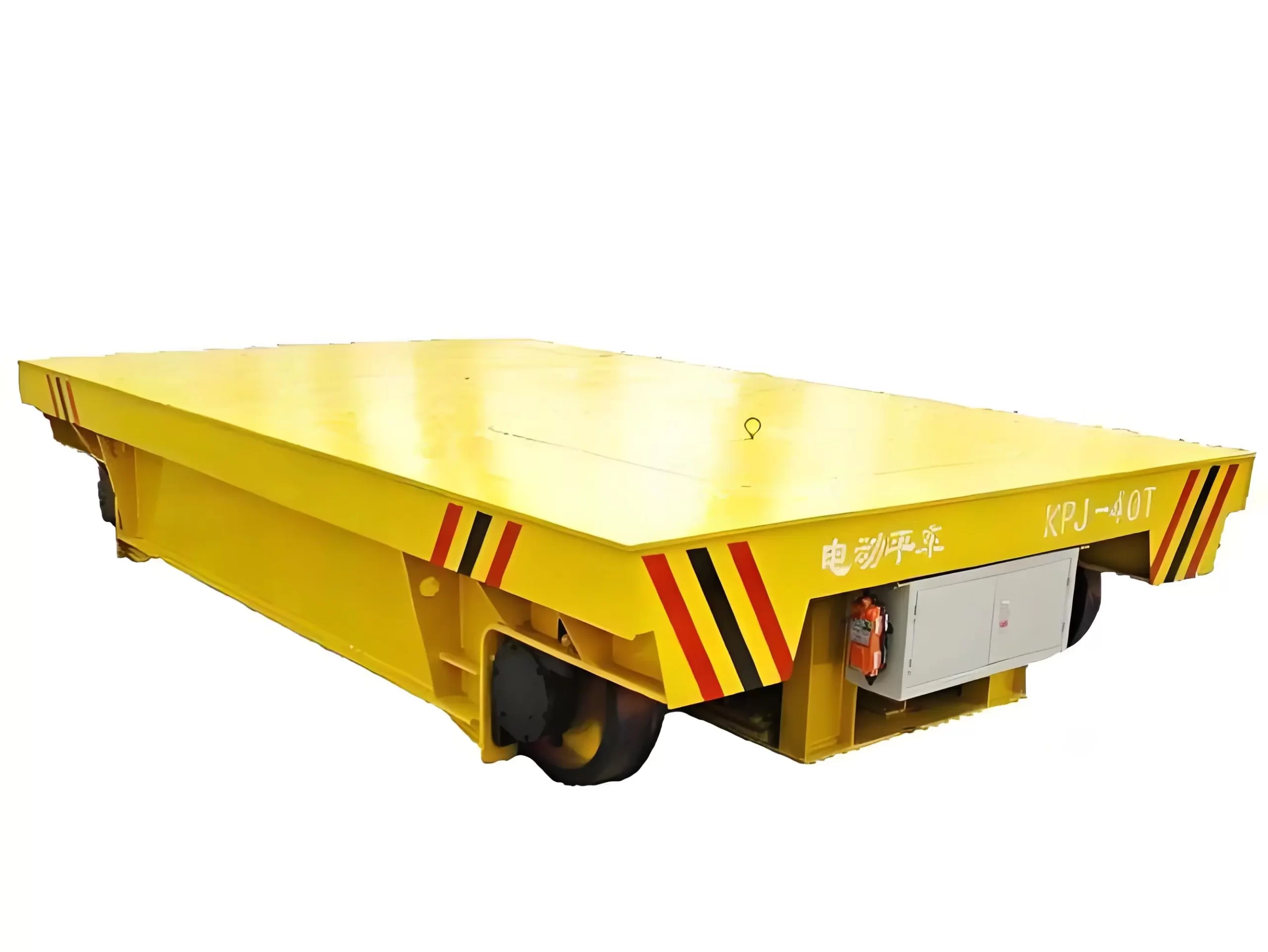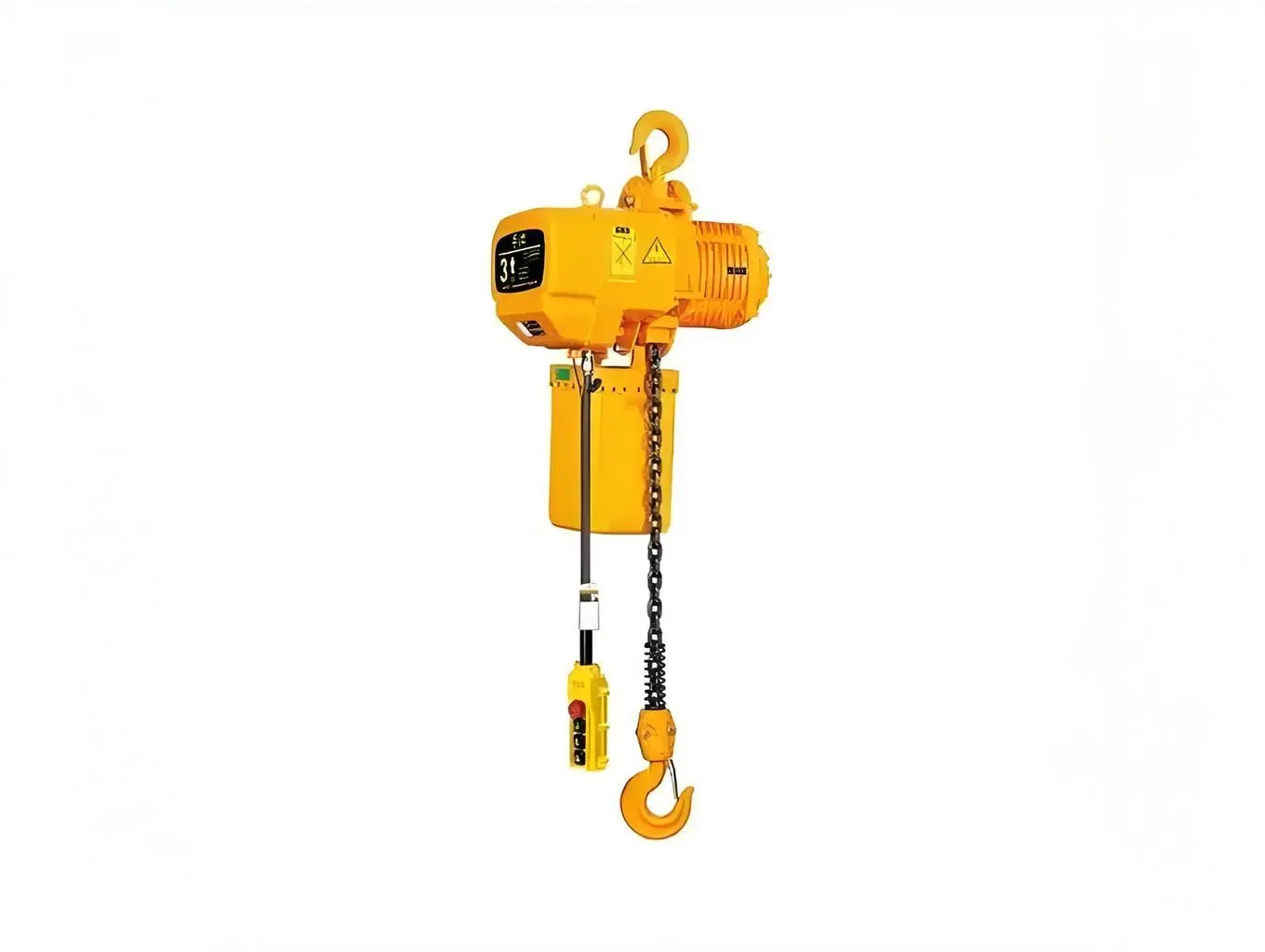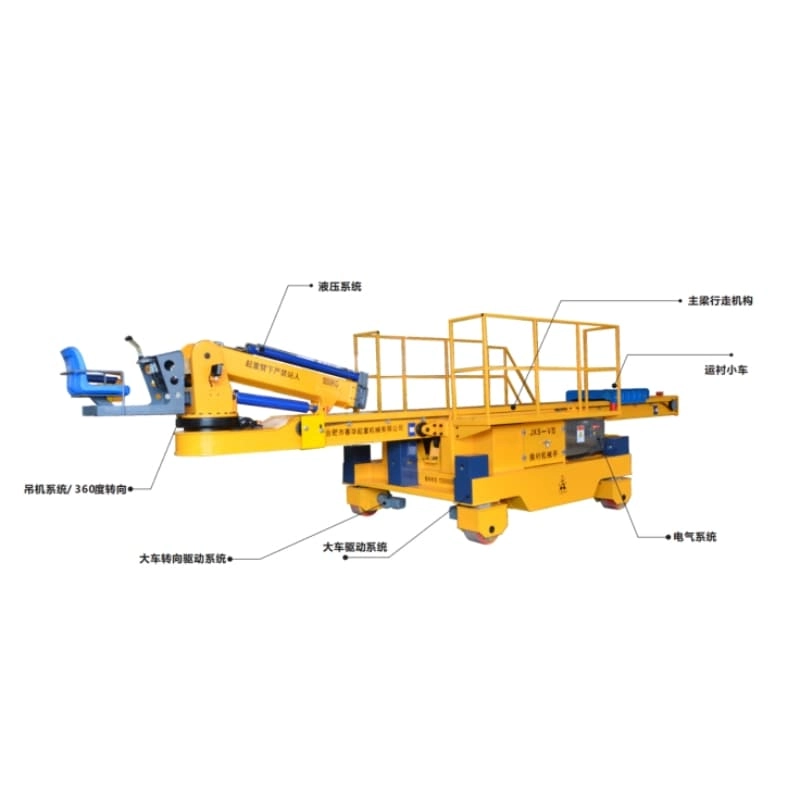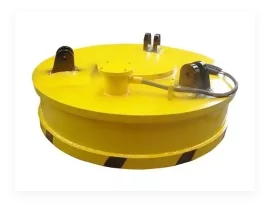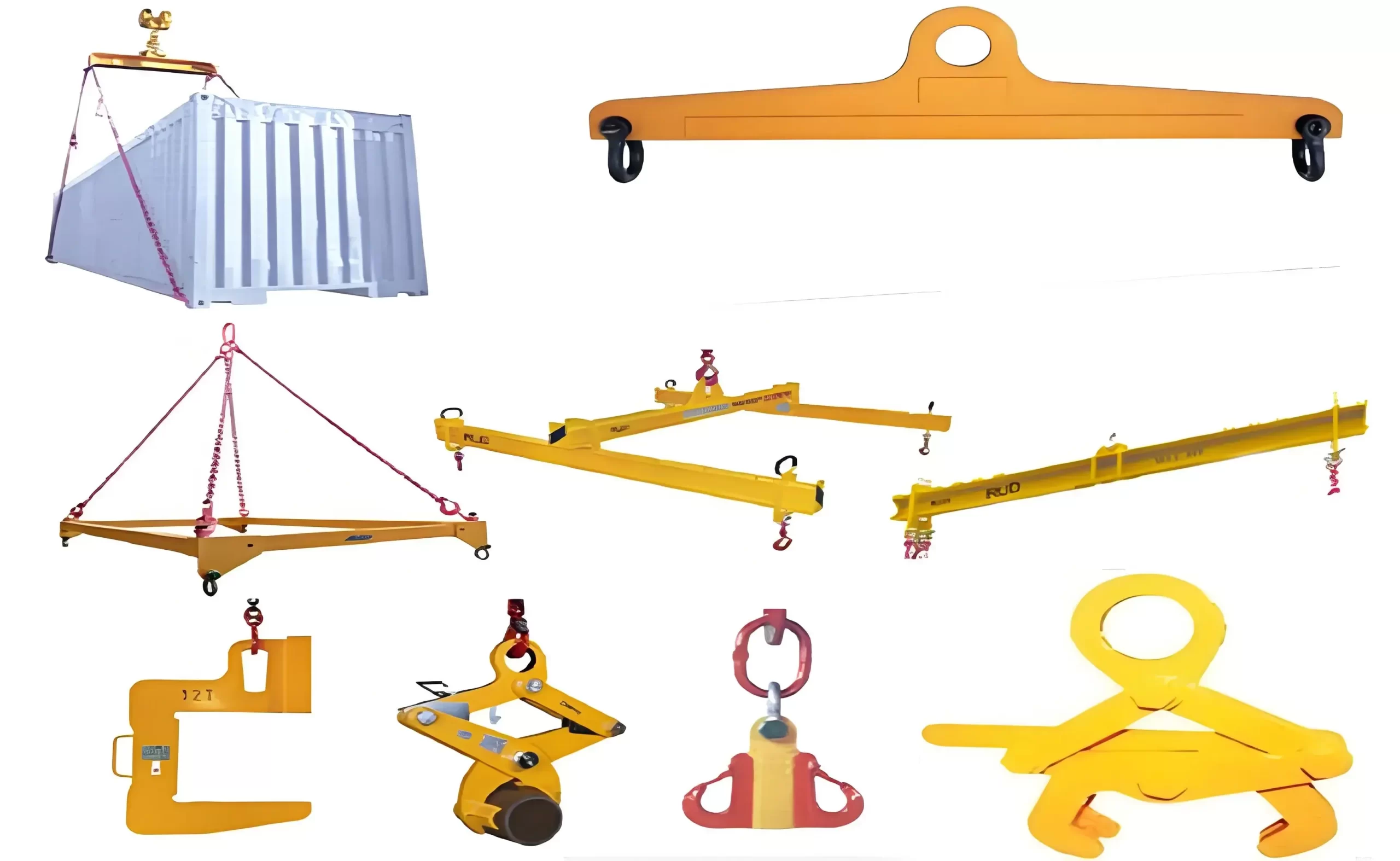Table of Contents
In modern industry, double girder cranes are widely used in manufacturing, warehousing, ports, and construction, and are among the most important lifting equipment. With continuous technological development, intelligent design has become a key factor in improving the safety and operational efficiency of double girder cranes. Chunhua will guide you through exploring how to improve the overall performance of double girder cranes through intelligent design.
Application of Intelligent Control Systems
The control system of an intelligent double girder crane integrates advanced sensors, monitoring equipment, and data processing technology to achieve real-time monitoring and automatic adjustment of the crane’s operating status. These intelligent control systems can precisely manage aspects such as load monitoring, lifting height control, and operating environment monitoring, thereby effectively reducing safety hazards caused by human error.
Through intelligent control, operators can promptly understand various parameters of the crane, avoiding dangerous situations such as overloading and overspeeding. For example, the system can automatically stop crane operation when the load exceeds the limit, ensuring safety.
Intelligent Sensing Technology Enhances Safety
Intelligent sensing technology is another important means of improving the safety of double girder cranes. By installing sensors, such as weight sensors, temperature sensors, and vibration sensors, on key components of the crane, the system can acquire real-time data on the equipment’s operating status. This data, after analysis, can predict the equipment’s health condition and prevent malfunctions.
For example, by monitoring motor temperature and load through intelligent sensors, signs of motor overheating or overload can be detected early, allowing for timely maintenance and preventing downtime or accidents caused by equipment failure.
Automated Operation Processes Improve Efficiency
Automated operation is the core of improving the efficiency of double girder overhead crane. Through intelligent design, the crane can automatically adjust the hook position, lifting weight, and lifting speed according to actual operational needs. This automated process not only reduces human intervention and improves operational accuracy but also shortens operation time and increases work efficiency.
For example, an intelligent scheduling system can automatically arrange cranes for precise handling based on the needs of warehousing or production workshops, reducing waiting and idle time, optimizing workflows, and thus improving overall operational efficiency.
Data Analysis Optimizes Maintenance Management
The intelligent maintenance system for double-girder cranes, through real-time collection and analysis of equipment operating data, can achieve accurate fault prediction and maintenance management. By analyzing parameters such as usage frequency, runtime, and load data, the system can predict equipment maintenance needs in advance, avoiding repairs only after equipment failures occur.
For example, when the system detects that the wear of a component exceeds a set value, it will issue an early alarm, reminding maintenance personnel to replace or repair it, thus preventing production stoppages due to equipment failure.
Enhancing Operator Training and Decision Support
Intelligent design can also assist operators in efficient training and decision support through **augmented reality (AR) and virtual reality (VR) technologies. Operators can practice operations in virtual simulation environments, not only improving their practical skills but also familiarizing themselves with emergency handling procedures in a simulated environment, enhancing their ability to cope with complex situations.
Through intelligent decision support systems, operators can receive real-time suggestions from the system when facing complex or dangerous tasks, further reducing operational errors and improving work efficiency.
Conclusion
With technological advancements, intelligent design has become an important means of improving the safety and operational efficiency of high-performance double-girder cranes. From intelligent control systems and intelligent sensing technologies to automated operation processes and intelligent maintenance management, intelligent applications make double-girder cranes safer and more efficient. With the continuous improvement of intelligent technology, future double-girder cranes will achieve more intelligent operation, improving production efficiency and ensuring operational safety.
Through continuous innovation and development, intelligent design will bring more potential and advantages to the operation of double-girder cranes, driving the crane industry towards greater efficiency and safety.

